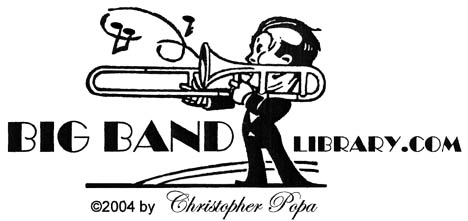
vital stats:
given name Jerome Rohkar
birth May 4, 1904, Freeport, IL
death Jul. 18, 1976, New York, NY, cancer
wife Noel Carter, a dancer, m.1941, div.1949
Initially, Gray Gordon's band wasn't as big in size as other groups of the era, with only 3 brass + 3 saxes + rhythm. Around 1940, they expanded with an additional trumpeter and saxophonist.
Members of the ensemble included, at various times, trombonist Bobby Blair; lead alto saxophonist and vocalist Cliff Grass, who later became a long-serving musician in Guy Lombardo's Royal Canadians; pianist Chet Roble; and vocalist Betty Bradley.
A slew of recordings on Bluebird and transcriptions for Thesaurus (and later, Associated) showed off the band's sweet music and novelties.
In 1941, they also made four Soundies, which attempted to be more swinging than the fare for which the group had previously been known.
But within a few years Gordon broke up his band, and he went into public relations and personal management, representing at one point guitarist Les Paul and wife Mary Ford and in 1957 saxophonist King Guion.
sources:
Charles Garrod, Del Courtney and His Orchestra / Gray Gordon and His Orchestra
(Zephyrhills, FL: Joyce Record Club, 1993).
"Gray Gordon, 72, Directed Dance Band in the 1930's," New York Times, Jul. 25, 1976,
p.37.
Natt Hale, liner notes, "Emotion, Inc.," ABC-Paramount ABC-172, 1957.
Roger D. Kinkle, The Complete Encyclopedia of Popular Music and Jazz 1900-1950:
Volume 2 Biographies A Through K (New Rochelle, NY: Arlington House Publishers,
1974), pp.986-987.
Scott MacGillivray and Ted Okuda, The Soundies Book: A Revised and Expanded Guide
to the "Music Videos" of the 1940s (Lincoln, NE: iUniverse, Inc., 2007), pp.105-106.
George T. Simon, The Big Bands (New York City: The Macmillan Company, 1967),
p.492.
I would like to expand this tribute with, if possible, a new interview of someone who was important to Gray Gordon's life or career. Are you an alumnus of his band, a member of his family, or a collector who is knowledgeable about his accomplishments? Please contact me via e-mail
return to "Biographical Sketches" directory
go to Big Band Library homepage
The big bands are back
in a new and exciting way!
GRAY GORDON
"TIC-TOC RHYTHM"
by Music Librarian CHRISTOPHER POPA
August 2008
There was no mistaking the sound of his band: two temple blocks maintained a "tick-tock" rhythm, similar to the monotonous operation of a clock.
A saxophonist, his first break as a bandleader was at the Chicago World's Fair, held in 1933. (They returned there the following year.)
In 1939, he reached his peak of popularity with an appearance in the Green Room of the Hotel Edison in New York City.
However, at that point, George T. Simon, writing in Metronome, wasn't impressed: according to his review, the total effect was like "a juicy steak over which you've just poured a quart of maple syrup."
Portrait by Maurice Seymour.
